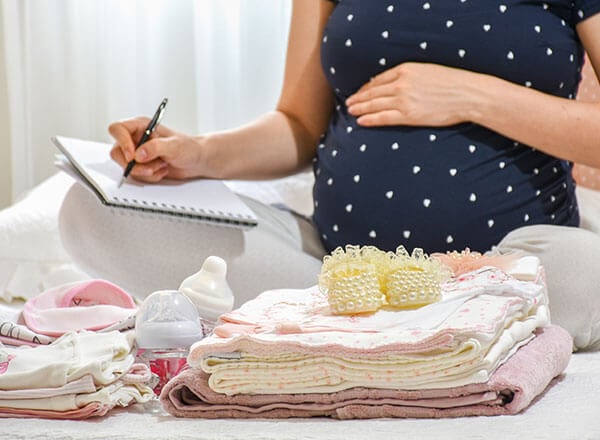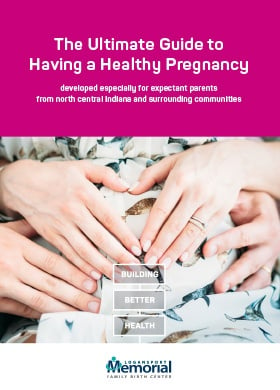The ultimate guide to having a Healthy Pregnancy
developed especially for expectant parents from north central Indiana, including Logansport, Rochester, Peru, Monticello, Winamac, and surrounding communities
Download this Guide
Get a free copy of the Ultimate Guide to Having a Healthy Pregnancy.
Congratulations!
What’s in this guide—
Healthier beginnings start with you. Now that you’ve confirmed your pregnancy, start thinking ahead so that you can be prepared well before your baby’s due date arrives.
Keep reading to get expert advice on:
- How to get your pregnancy off to a healthy start
- How to take care of yourself and your newborn
- What to expect during your pregnancy week by week
- Transitioning to life at home with your new baby

First Trimester
You're pregnant. Now what?
Prenatal care is what keeps you and your baby healthy. Babies born to mothers who do not get prenatal care are three times more likely to have a low birth weight and five times more likely to die than babies born to mothers who do get early and regular prenatal care.
Whether your pregnancy is unplanned or something you have been excitedly anticipating, it’s crucial to start taking charge of your health needs as well as those of your baby. After finding out that you’re pregnant, you’ll experience a wide range of emotions, from that excitement and anticipation to worry and anxiety.
Put some of your worries to rest by following these tips to get your pregnancy off to a healthy start:
1. Take prenatal vitamins
Start taking prenatal vitamins as soon as possible. They’re available over the counter and without a prescription from most drugstores.
Learn more about folic acid’s benefits for your newborn
2. Watch what you eat
Even the healthiest eaters need to know what to eat when pregnant—and, what not to eat when pregnant. Some food is better during pregnancy than others. Avoid alcohol, soft cheeses, and raw or undercooked meat, poultry, and certain types of seafood (including sushi).
Get tips on how to improve your nutrition during pregnancy
3. Work to optimize your health
Get any medical conditions, such as diabetes, under control. Continue exercising and maintain a healthy weight. Stop smoking, drinking alcohol, and using drugs.
4. Schedule prenatal visits
Find a doctor and make appointments for regular prenatal visits.
View Profiles of our Board-Certified OB doctors
What you can expect from us
We’ve enhanced the childbirth experience at Logansport Memorial Hospital to ensure babies get the best start in life. Beyond providing essential breastfeeding support to all mothers, Logansport Memorial Hospital also practices:
Rooming In
Your newborn will stay with you during your entire hospital stay. The rooming-in process makes bonding easier and helps you learn and feel more in tune with your infant’s feeding cues and signals for other needs.
Treatment Room
As part of the rooming-in process at a Baby-Friendly hospital, most of your new baby’s wellness checks and doctor’s visits will happen in your room as well. Baby-Friendly hospitals have a dedicated treatment room if your newborn has health concerns or special needs that require more comprehensive attention from the doctor.
Skin-to-Skin
At Baby-Friendly hospitals, as a new mom, your baby will be placed directly on your chest immediately after giving birth. This immediate skin-to-skin contact has many perks, including health benefits such as improved heart and lung function, better blood sugar regulation, and the transfer of good bacteria. It also helps initiate breastfeeding more quickly, reduces crying, relieves pain, and calms and further nurtures your bonding with baby.
Skin-to-skin contact is facilitated when possible during every birth experience at Logansport Memorial Hospital, including for a routine vaginal delivery, as well as for a planned or more emergent C-section.
The “Golden Hour”
The “golden hour” is the name given to the period of time—usually at least one hour long—to spend together with your baby and partner for undisturbed bonding before family members are allowed to come to your room and meet your newborn.
Provider Education
All team members in the obstetrics unit at Baby-Friendly hospitals—from nurses to OB/GYNs and pediatricians—have completed special training in breastfeeding education so that they can offer better support after your delivery.
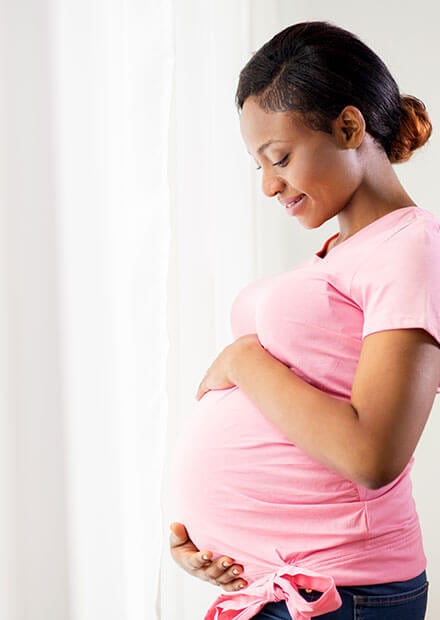
Paying for Your Pregnancy
Raising a newborn can be expensive, but luckily pregnancy doesn’t have bust your budget if you plan and save.
Whether you have health insurance or not, it doesn’t hurt to be well-prepared and know what to expect when it comes to paying for medical costs associated with your pregnancy. Having a clear idea about what charges you might be responsible for makes financial planning easier. Ask your hospital for a break down of charges commonly owed after delivery.
As you work on your budget, keep in mind that it’s likely you’ll also have non-healthcare related expenses. Most women make plans to buy maternity clothes, but some are surprised to find they need to get pregnancy-friendly shoes, too, if their shoe size goes up a half or whole size due to changes from hormones, weight gain, or swelling.
You may also want to save some money to cover expenses that will make your pregnancy a little more comfortable during those times when you’re feeling too nauseous or exhausted to tackle day-to-day tasks. Having some money set aside if you need to pay for already prepared meals, extra help cleaning your house, and assistance doing other everyday tasks can be a lifesaver.
The importance of prenatal visits
One of the most helpful things that you can do for you and your baby is set-up regular prenatal visits with a doctor.
During prenatal visits, your doctor will share advice on what you can do to have the healthiest pregnancy possible, covering topics such as:
Nutrition
Recommendations on what to eat when pregnant (and what not to eat when pregnant)
Medicine
Guidelines on which drugs and supplements are safe to continue taking while you’re pregnant
Medical conditions
Directions on how to control any existing medical conditions (such as diabetes or high blood pressure) to avoid complications while pregnant
Find out what are the signs of preeclampsia
Learn about the symptoms of Gestational Diabetes
Additionally, your doctor will offer ultrasounds to make sure your baby is growing as he should, as well as other optional screenings, tests, and examinations to provide information on your baby and identify any potential health problems that might affect you or your baby, including:
- Treatable health problems
- Characteristics of your baby, such as his size, sex, age, and placement in your uterus
- Information on the chance that your baby has specific congenital disabilities or genetic problems
- Details about certain types of fetal abnormalities your baby might have, like heart problems

What helps morning sickness
About half of all women experience morning sickness, according to the American Pregnancy Association. This condition can be one of the earliest signs of pregnancy.
If you’re experiencing the vomiting and nausea associated with morning sickness, to alleviate your symptoms try to adjust your lifestyle in these ways:
- Don’t skip meals; instead, eat smaller meals throughout the day and avoid having larger meals
- Drink fluids 30 minutes or more before and after meals, but not with meals
- Eat a few soda crackers, like Saltines, as soon as you get up in the morning, and during the day eat a few salty potato chips to settle your stomach so that you can have a meal
- If food odor bothers you, have someone else cook for you or cook with windows open or with a fan running
- Avoid places that are warm to prevent feelings of nausea
- Exercise
- Get plenty of rest and nap during the day, if possible, but don’t lie down after eating
- Avoid spicy foods
- Eat watermelon, drink lemonade, or smell a slice of lemon or wedge of ginger to relieve nausea
- Get help by contacting your doctor if you experience excessive nausea; if vomiting prevents you from keeping any food down or if pain or fever accompany it; if nausea and vomiting persists into your second trimester.

Second Trimester
What to get done while you’re feeling good
Your second trimester lasts from week 13 of your pregnancy until week 27. This period is sometimes referred to as the “honeymoon period” because you’ll be feeling good, making it a great time to get some things done.
The second trimester of pregnancy is also a time to expect some firsts. You’ll have the opportunity to find out your baby’s sex, and—between week 16 and 22—most expectant moms also feel their baby’s first movements. If you’ve been pregnant before, you might even feel "kicking" sensations as early as 12 weeks pregnant.
Attending Prenatal and Pregnancy Classes
Take the mystery out of being pregnant with prenatal and pregnancy classes. Many hospitals provide facility tours and offer classes to give you an overview of what goes into labor as well as provide background information on breathing techniques, medications and anesthesia, give background on infant CPR, and more.
Outside of the hospital setting, check with your favorite local businesses and organizations to see if they offer any unique class options, like prenatal yoga, customized around your needs as a pregnant woman that you’d like to take advantage of and attend.
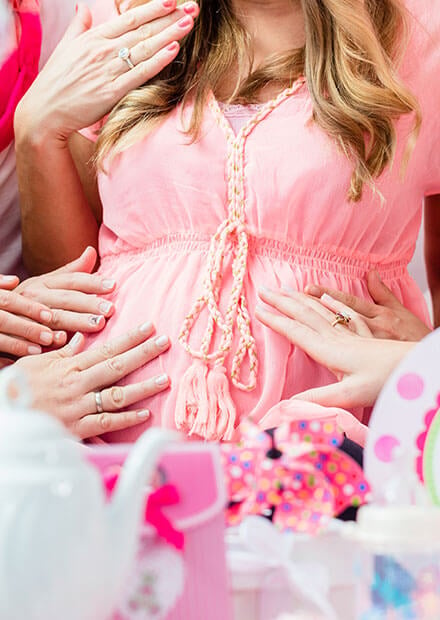
Planning a baby shower & creating a registry
Before you bring your baby home, you’ll want to make sure you have all the necessities. It’s easy to come up with all the fun stuff (like clothes and toys) for a gift registry, but have you thought about all of the more practical and must-have items you’ll need to get you through day-to-day?
The first item you should include is a car seat. According to Indiana state law, you can’t go home from the hospital without one. When it comes to how to choose a car seat, keep in mind that you’ll want to pick an option for your baby registry that is federally-approved.
Some mothers choose to skip putting a cart seat on their registries all together and prioritize buying a car seat themselves to get exactly what they want and so that they have time to get it installed correctly.
In addition to a safe car seat, you will also want to make sure you find a secure crib. Doctors agree that the safest place for your baby to sleep is in his crib. When considering your options for your newborn, pick a crib that has:
- No missing, loose, broken, or improperly installed screws or other loose hardware
- No more than 2 ⅜ inches between crib slats so that your baby’s body can’t fit through the slats (if a soda can fits easily through the slats, the spaces between the slats are too wide)
- A firm and snug-fitting mattress so that your baby can’t get trapped between the mattress and side of the crib
- No cracked or peeling paint
- No splinters or rough edges
- No quilts, comforters, duvets, blankets, stuffed animals, or bumper pads
When it comes to everything else, the dos and don’ts of creating a baby gift registry can be subjective. In general, though, it’s important to do your homework, pick big- and small-ticket things, and think long-term because when you give loved ones a variety of items to shop for it makes their gift-buying for baby showers easier.
As you add to your registry, don’t forget about yourself! Don’t hesitate to think about items that will add to your comfort during pregnancy and after you have your baby. For example, nursing supplies—such as a breast pump, nursing pillow (and cover), and breastmilk storage bags—make great items to add to your wish list.
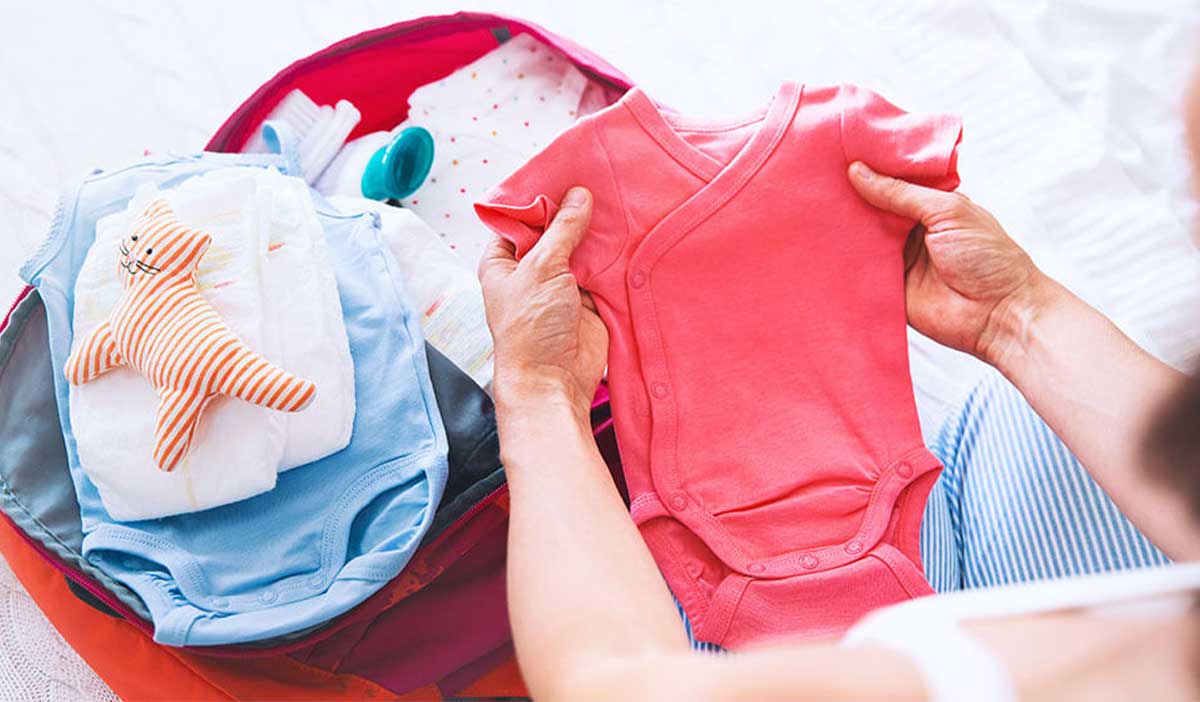
Third Trimester
Preparing for Labor and Delivery
During your third trimester, it’s a good idea to start finalizing your childbirth plans. Once you’re eight months pregnant, it’s possible that you could go into labor at any time during the weeks leading up to your baby’s due date so being prepared for your hospital stay makes a difference.
Know when to... call your doctor’s office (or go to the hospital for labor evaluation)
If you notice any of the following symptoms before childbirth, please contact your doctor:
- Bleeding from your vagina
- A sudden gush of water from your vagina (or leaking)
- Sudden, continuous, or intermittent abdominal pain
- Fainting spells or loss of consciousness
- Blurring vision or spots before your eyes
- Pain or burning sensation while urinating
- Chills or fever
- Labor pains three to five minutes apart (if you are a first-time mom) or seven to ten minutes apart (if you’ve had a baby before), that last 45 to 60 seconds each and do not change when you change what you’re doing
Choosing a doctor for your baby
Before coming to the hospital to deliver your baby, it’s vital to choose and schedule an interview with your baby’s doctor. A pediatrician or family physician will need to examine your baby before you leave the hospital.
Here are some questions to ask yourself when choosing a doctor for your baby:
- Do you feel comfortable asking questions and talking with the doctor?
- Where is the office located compared to your home, workplace, and daycare?
- What are the office hours? Are they convenient to your schedule?
- Are there any call-in hours for non-emergency questions?
- Are there other doctors in the practice? Who covers for the doctor on weekends and holidays?
- How long does it take to get an appointment? How long will you usually have to wait before the doctor sees your child?

"Fourth Trimester"
Adjusting to Life with Your New Baby
Unfortunately, your newborn isn’t like a new TV. He won’t come home with you from the hospital with a set of operating instructions.
Though each baby is different, having a general idea about what you might expect during your first few days together at home can make infant care less stressful. Give yourself time to build confidence as you settle into routines with your new baby as part of the household.
Taking Care of Yourself After Childbirth
Even during uneventful pregnancies, your body will change a lot after going through labor and delivery. That’s why it’s crucial to pay attention to your postpartum health and how you are healing, both emotionally and physically.
Once you come home from the hospital, don’t be afraid to ask for help—or to receive it!—from your doctor or friends and family. Avoid exhaustion by getting plenty of rest during your recovery and finding ways to relieve stress.

Know when to... call your doctor’s office
If during your postpartum recovery you notice any of the following symptoms, check in with your doctor:
- Temperature over 100.4 degrees
- Excessive bleeding (saturating a pad in less than an hour or numerous small clots)
- Breast pain with redness, flu-like symptoms, or fever and chills
- Continued soreness in your nipples, cracking or bleeding, or unrelieved breast engorgement
- Burning or frequency with urination
- Sharp abdominal pain
- Pain in your legs
- Shortness of breath
- Foul odor to your vaginal discharge, accompanied by fever
- Severe depression or feeling that you may harm yourself or your baby
Managing Your Newborn’s Health
Here is a collection of handy tips on some of most common topics that new moms ask questions about as they adjust to life after welcoming your new baby to your home.
Sleep & Your Baby
Many newborns are quite sleepy and will spend more time sleeping than any other activity. It’s normal for a tiny baby to sleep 16 to 20 hours daily. Take advantage of these periods of sleep to get some of the rest you need.
Sleep positioning matters. All babies should sleep on their back. The American Academy of Pediatrics recommends that all healthy full-term infants sleep on their backs to reduce the risk of sudden infant death syndrome (SIDS). Here are some additional helpful tips:
- Always place your baby on his or her back to sleep (unless your baby’s doctor says to do something else for the baby’s health).
- Do not put your baby on his or her side or stomach because it increases the chances of SIDS.
- Do not use wedges, cushions, blankets, or anything else when placing your baby to sleep.
- Do not use any blankets or soft bedding.
- Do “tummy time” while your baby is awake for developmental reasons and to help prevent flat spots on the back of his head.
Nutrition & Your Baby
Newborns have tiny stomachs, and you can expect to need to feed your baby frequently both night and day. Pay attention to your newborn’s first signs of hunger—such as stirring, rooting, and putting their hands in their mouth—before they start crying.
Bottle feeding
On average, your baby will want to drink between 1.5 and 3 ounces every two to three hours.
Breastfeeding
Your baby will nurse anywhere from 8 to 12 times each day (basically, “on demand” whenever your baby is hungry). Though you can’t nurse too much, you can nurse too little. Watch for signals.
Get answers to all your breastfeeding questions
Diapers & Your Baby
You’ll also be doing a lot of diaper changes, and you’ll want to keep a record of urine and bowel movements to share with your doctor during the first checkup. Change your baby’s diapers whenever wet or soiled. After each bowel movement or wetting, wash and pat dry following these instructions:
For girls
Separate the folds and gently wash area from front to back, using a clean area of a washcloth with each swipe until thoroughly clean.
For boys
Wash penis, creases, and folds near the scrotum. (Note: Do not push back the foreskin of an uncircumcised baby. Your baby’s doctor will provide specific instructions on how to care for your uncircumcised baby.)
What’s normal and healthy for babies can vary. If something seems off or if there are any sudden changes, don’t hesitate to call your doctor.
Diaper Schedule
- Birth–One Day Old: At least one wet and one stool diaper
- Two Days Old: Two to three wet diapers and two to three stools
- Three Days Old: Three to four wet diapers and more than three stools
- Four Days Old: Five to six wet diapers and more than three stools
- Five Days Old: Six to eight wet diapers and more than three stools
- Six Days Old Through the First Month of Life: Minimum of six to eight wet diapers and three or more stools every day

Know when to... call your baby’s doctor
If your baby displays any of following symptoms, please contact your baby’s doctor:
- For babies under three months of age: Your baby’s under the arm temperature is over 100.4 degrees, or he has a rectal temperature over 101 degrees
- During the first week of life: Your baby goes 24-hours with less than four wet diapers
- After the second week of life: Your baby goes 24-hours with less than six wet diapers
- Your baby refuses to eat for six to eight hours
- Your baby experiences drastic behavior changes, such as increased irritability, excessive crying without a cause, extreme sleepiness, or floppy arms and legs
- There is redness, foul odor, or drainage around your baby’s belly button that extends out onto the stomach
- Your baby vomits repeatedly
- Your baby has a congested cough, running eyes or nose, or noisy breathing
- Your baby’s skin becomes pale blue or very yellow
- Your baby develops a rash with a fever
Managing Other Common Concerns
New mothers regularly ask our experts about the same types of issues. Here are some tips on how to handle common concerns:
Soft Spots
Your baby has soft spots on the front and back of the head formed by the gap between the bones of the skull. A tough membrane covers these soft spots, and they can’t be damaged by shampooing, brushing, or gently touching your baby’s head. It is normal to see it moving up and down as your baby feeds or cries, but it should not look sunken or bulging at other times.
Rashes
Some babies develop a blotchy, red rash within 24–48 hours after birth. These rashes are harmless and should disappear without treatment in a few days. If any rash has drainage, bring it to the attention of your pediatrician.
Patches or Spots
Some babies have patches of pink on their nose, eyelids, and neck, commonly called “stork bites.” Dark bluish-gray patches on the back and buttocks are called “Mongolian spots.” Usually, they will fade away slowly and disappear by two years of age.
Holding Your Infant
When cradling your newborn, support his back and head with your arm and hand. Don’t be afraid to touch your baby often. Use skin-to-skin contact and hold your baby close to you.
Crying
Your new baby’s primary form of communication is crying. Babies might cry when they have to burp or when they have wet or soiled their diapers. They may also cry if they are tired, bored, or just lonely. As time goes by, you’ll learn what your baby’s cries mean. If feeding cues accompany crying, it’s usually a sign of hunger.
You won’t spoil your baby by responding promptly to crying. Your infant will only cry if he needs something. Each time you satisfy his needs, you are teaching your baby to trust people and showing him that someone cares for him.
Nail Care
During the first days of life, nails may be long and adhered to the skin high on the nail. Trim nails frequently with blunt-edged small scissors or file with an emery board to prevent scratching. Cut your baby’s nails straight across.
Bathing
Sponge bathe your baby until the umbilical cord falls off. Afterward, you may give your baby a tub bath. Bathing every one to two days is all that is necessary. Shampooing two to three times a week is adequate.
Never leave your baby unattended during the bath. If you have forgotten something, bring your baby with you. Be sure to test the water temperature with the outside of your wrist to make sure that the water is not too hot. Use mild soap sparingly, but not on baby’s face. Lotions and oils are unnecessary.

Why Choose LMH?
Logansport Memorial Hospital’s Family Birth Center provides optimal prenatal care to every patient. Our staff and doctors will help you and your family plan during every step of your pregnancy journey so you feel prepared for childbirth and taking care of your new baby.
We serve Cass County and the surrounding communities by offering high quality, cost-effective maternal and neonatal services in a supportive, compassionate and family-centered environment.
The Family Birth Center has five labor, delivery and recovery rooms, a Cesarean section suite, a level II nursery, and eight private postpartum suites.
Get the best care–before, during, and after pregnancy
For supportive, comprehensive, and Baby-Friendly guidance and treatment during your pregnancy and beyond, choose the team at Logansport Memorial Hospital.
Take a virtual tour of our newly renovated Family Birth Center
Be sure to download the additional resources within and print a copy of this guide to help you answer questions that come up through each phase of your pregnancy.



